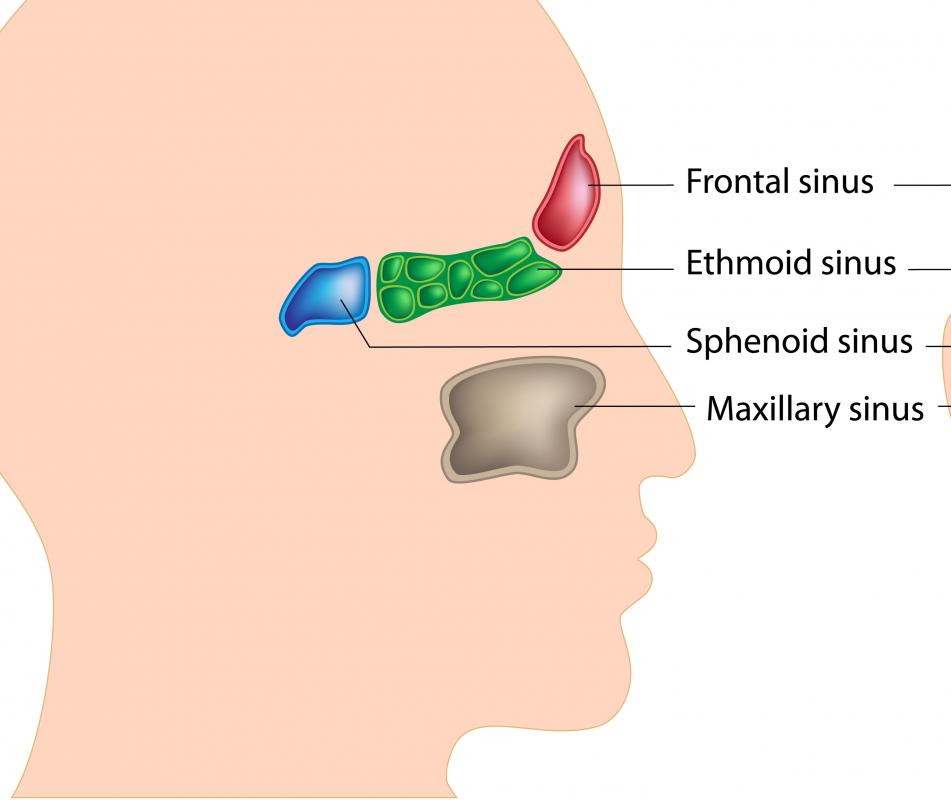At TheHealthBoard, we're committed to delivering accurate, trustworthy information. Our expert-authored content is rigorously fact-checked and sourced from credible authorities. Discover how we uphold the highest standards in providing you with reliable knowledge.
What is an Inverted Papilloma?
A papilloma forms when there is an excessive growth of cells in surfaces or linings of organs. The benign skin growth called wart is actually a papilloma caused by the human papilloma virus (HPV). Inverted papilloma are papillomas that grow inward, relative to the normal supporting tissues, and look like fingers which can be visible to the human eye or under the microscope. These growths are commonly found on the nasal cavities, urinary tract, and skin. Inverted papillomas are normally benign, but may cause obstructive symptoms or bleeding.
Inverted papillomas are most common in the nose and sinuses; even so, they only represent approximately 0.5% of all nasal tumors. When found in the nasal or paranasal passages, it is also called nasal papilloma, sinonasal papilloma, or Schneiderian papilloma. Most often, it occurs in only one side of the nose.

Visualized without a microscope, an inverted papilloma would appear like a nasal polyp. It has also been described looking like a granular mulberry. The color often varies from pale pink to red, caused by the high density of blood vessels. The high vascularity of an inverted papilloma is the main reason why it is prone to bleeding.
The inverted papillomas of the nose and sinuses are benign, but they can be aggressive and invade the underlying tissue. Their actual cause is not known, but suggested causes are chronic sinusitis, airborne pollutants, allergies, and viral infections. There is no proven link between allergies and inverted papilloma. Experts suggest viral infection, particularly HPV infection, is the cause. Studies have shown that HPV types 6, 11, 16, and 18 are found in these growths.

HPV subtypes 6 and 11 are normally benign, whereas subtypes 16 and 18 contribute have a high risk for becoming malignant. Thus, although initially benign, an inverted papilloma can develop malignant potential. In 5 to 10% of cases showed, this papilloma caused squamous cell carcinoma formation.
A patient with growth in the nasal wall usually presents symptoms of congestion or difficulty in breathing through one nostril. Other symptoms include facial pain, yellow or clear nasal discharge, and nasal pain or nosebleed, all of which are unilateral. This type of papilloma is aggressive and can progressively enlarge; thus, it could lead to total nasal obstruction on one side. Prompt surgical removal is the best treatment for this condition.

This type of benign tumor can also be found in the urinary tract, specifically in the posterior or lateral portions of the base of the urinary bladder. Inverted papilloma can also be found in the urethra, in which case it is called an inverted urothelial papilloma. The common symptoms encountered are blood in the urine or pain on urination. Surgical excision usually provides prompt relief and cure.
AS FEATURED ON:
AS FEATURED ON:


















Discussion Comments
My cousin's husband had to have surgery to remove several inverted papillomas in his nose. He was pretty miserable after the surgery and said he didn't know if he would ever do it again.
I don't know if these ever become sinus cancer, or malignant in general, but it would be a pain in the neck to have to have each one removed and biopsied for cancer.
My dad also had an inverted papilloma in his nostril and it would start bleeding. His doctor was able to remove it in the office, but it was annoying before he had it removed. Anything could start it bleeding and he would just have to hold his handkerchief over his nose until it quit.
Post your comments